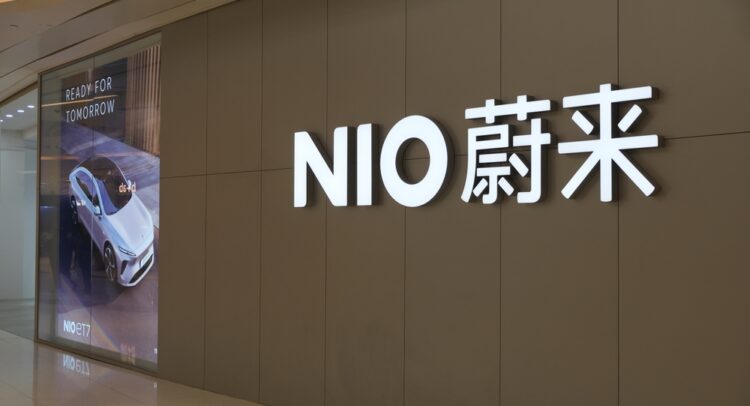NIO (NIO) was once tipped as a winner in the electric vehicle (EV) space, but it has fallen way behind its peers. Despite the falling share price, the promise of its new ONVO brand, and improving delivery figures in 2024, I’m not risking my money on NIO and have a neutral stance on the stock. While I was a big fan of Nio’s battery-swapping technology, I remain cautious as the company has failed to deliver on its potential.
I prefer to remain on the sidelines due to several risks, including Nio stock’s disappointing performance, persistent losses, intense competition and market saturation in the Chinese EV market, and significant cash burn.

NIO Stock’s Dismal Performance Amid Continued Losses
Nio stock’s steep decline amid continued losses is one of the key reasons for my neutral stance. The stock trades at a fraction of where it was in early 2021. NIO stock is down over 90% from its highs, making it one of the worst-performing stocks in the sector. In addition to bubble-like conditions, the main reason for the stock’s underperformance has been its inability to deliver on growth promises and continued losses.
This is evidenced by the company’s performance in Q1. NIO delivered 30,053 EVs, representing a 3.2% decrease year-over-year and a decrease of 39.9% from Q4 2023. Total revenues reached $1.37 billion in Q1 2024, representing a 7.2% decrease year-over-year and a sequential decrease of 42.1%.
Overall, NIO reported a net loss of $718.1 million in Q1 2024, reflecting an increase of 9.4% from the first quarter of 2023 but a decrease of 3.4% from the fourth quarter of 2023.
Nio is Losing Ground to Rivals
So, why hasn’t NIO delivered on the growth that the market had hoped for? Well, while NIO’s unique battery-swapping technology sets it apart from its peers, the company has struggled due to increased competition and market saturation in the Chinese EV sector. With numerous brands and tech companies like Xiaomi (XIACF) entering the EV market, NIO has experienced pressure on its pricing and market share.
Despite Nio having over 2,400 Power Swap stations, mainly in China, adoption rates have not met expectations. One reason for this may be range anxiety. Li Auto’s extended-range electric vehicles (EREV) have fared better, offering a superior range.
Further, Nio hasn’t achieved the growth that many of its peers have. In the first half of the year, NIO delivered 87,426 units, a 60.2% increase year-over-year. Despite a bad start to the year, Li Auto (LI) has delivered almost double NIO’s total. Tesla (TSLA) has delivered almost eight times.
Can NIO Stock Make a Comeback?
Despite these setbacks, NIO certainly isn’t down and out. Analysts have pointed to several catalysts, including the launch of its ONVO (translates to “Path to Happiness”) sub-brand in September. This new brand targets a lower price point – the $30,000 range – allowing NIO to tap into a broader customer base and explore volume production to offset its significant costs as a premium brand.
Moreover, the company’s delivery trajectory in 2024 is actually rather impressive when viewed in isolation, the caveat being there was a low starting point. Management is now targeting 30,000 NIO deliveries per month with a gross margin of 20% and 20,000-30,000 ONVO deliveries per month with a 15% gross margin.
However, investors are concerned about Nio’s cash burn rate and how soon it can break even. The sooner it gets there, if it can, the better. The Chinese EV company ended Q1 with a cash balance of $6.3 billion but recorded a net loss in excess of $700 million.
I have another concern, and it’s one that I don’t see raised very often. The company’s battery-swapping technology promises to exchange empty batteries for new ones in a matter of minutes. That’s great, but EV charging times have fallen massively in recent years. The Li Mega can be charged in a little over 10 minutes. The USP of battery swapping is, arguably, fading.
Overall, Nio’s comeback could be hindered by persistent cash burn and other headwinds.
Is NIO Stock Worth the Price Tag?
According to analysts, NIO won’t hit breakeven until 2027. It’s currently valued at 15.4x forward earnings for 2027, but only one analyst is providing an earnings forecast that far in advance.
On a forward price-to-sales (P/S) basis, NIO is trading at 0.8x, putting it at a modest discount to Li Auto at 0.9x. The big difference is that Li Auto is profit-making. From this data, I’d suggest that NIO is either overvalued or Li Auto is oversold.
Is NIO Stock a Buy, According to Analysts?
On TipRanks, NIO comes in as a Moderate Buy based on four Buys, four Holds, and one Sell rating assigned by analysts in the past three months. The average NIO stock price target is $6.39, which indicates 62.2% upside potential.

The Bottom Line on NIO Stock
NIO stock has huge upside potential, according to analysts. Recent delivery figures have been encouraging and the ONVO launch holds promise. Nonetheless, I am sidelined on Nio stock as it remains a risky investment amid several pressures, including continued losses and intense competition.










